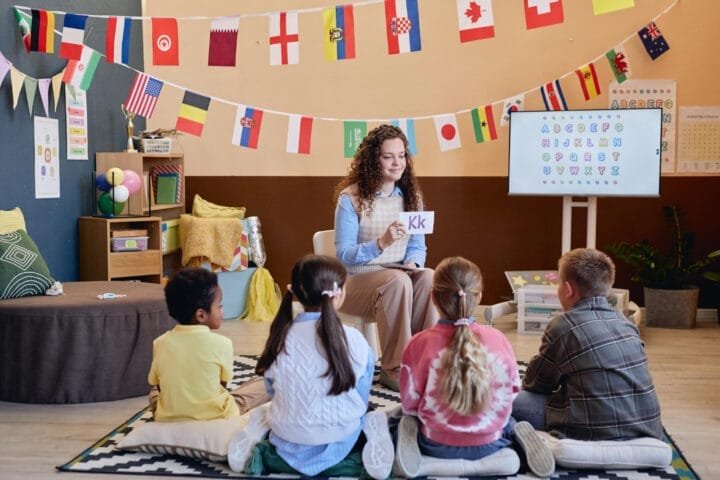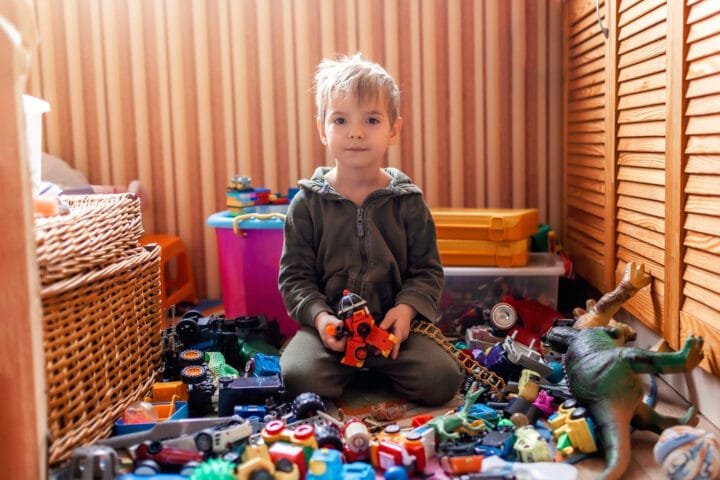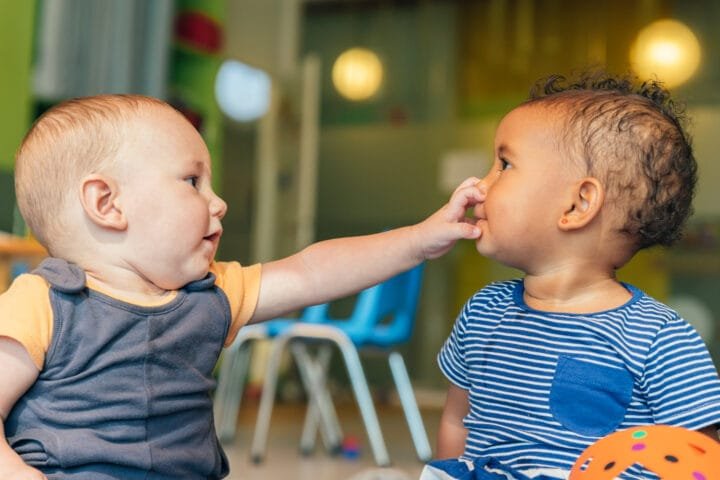Nurturing Empathy and Inclusivity: Teaching Children Through Black History Month
Do you remember your first lesson in empathy? Mine happened on a scorching summer day when I was about seven years old. My mom had taken me to a local civil rights museum, and there, I saw a picture of children my age, their faces lit with determination despite the adversity they faced daily. That day, something clicked. I realized for the first time the transformative power of empathy and inclusivity. Fast forward, as a parent now, I often ask myself, “How can we ensure our children grow up embodying these crucial values?” One powerful tool we have at our disposal is Black History Month. During this month, we have an enriching opportunity to impart lessons that foster empathy and promote inclusivity. Let’s explore how.
Understanding Black History Month
What is Black History Month?
Black History Month celebrated every February in the United States, Canada, and various other parts of the world, offers an invaluable time to honor the myriad achievements and significant contributions of Black Americans throughout history. This observance started in 1926 when historian Carter G. Woodson initiated “Negro History Week.” His vision was to educate the masses about the rich history of Black Americans and ensure their achievements were recognized. Over the decades, this week-long celebration evolved into a full month, with it gaining official recognition in the U.S. in 1976.
The goal of Black History Month remains steadfast: to educate, celebrate, and reflect on the monumental roles of Black Americans in our society. Teaching children about the Black History Month is instrumental for fostering both awareness and empathy. It’s a gateway to understanding the intricate tapestry of our history, the struggles and triumphs faced, and the continuous journey toward equality and justice.
The Evolution of Black History Month
From its humble beginnings as a week-long commemoration, Black History Month has evolved, reflecting the changing times and society’s growing recognition of inclusivity. Initially centered on prominent historical figures like Frederick Douglass and Harriet Tubman, today’s celebrations have broadened significantly. Now, they encompass a wider array of figures, from scientists like George Washington Carver to artists like Jean-Michel Basquiat, and contemporary leaders like Barack Obama. Each year brings new themes that address both historical and current issues, such as “Black Health and Wellness” in 2022, encompassing the richness and diversity of Black contributions to society.
Teaching children about these themes helps them understand not only the history but also the ongoing contributions and challenges faced by Black communities. One poignant example from recent years is the theme “Black Women in the Arts,” a celebration encompassing figures like Nina Simone and Maya Angelou, which encourages children to explore the far-reaching impacts of Black culture in arts and beyond.
The Role of Empathy in Historical Context
Empathy Through Historical Stories
Understanding history isn’t merely about memorizing dates and facts; it’s about connecting with people and their stories. When we delve into Black history, stories of resilience shine brightly. Take Ruby Bridges, for instance, a six-year-old girl who bravely walked into an all-white school amidst a sea of hostility. Sharing such narratives can cultivate profound empathy in children, helping them connect emotionally to experiences far removed from their own.
Imagine sitting with your child, reading about Harriet Tubman’s daring rescues along the Underground Railroad. Discuss how scared but determined she must have felt, saving lives while risking her own. Ask your child how they would feel if they were in her shoes. These conversations can spark deep empathy and admiration, laying the groundwork for understanding and compassion.
Research supports the effectiveness of such approaches. A study published in the Journal of Research in Childhood Education found that children who engaged with historical narratives showing diverse perspectives exhibited increased empathy and a better understanding of social justice issues. This emotional engagement is not just educational; it’s transformative, molding how children perceive and interact with the world around them.
Connecting Past and Present
Empathy profoundly deepens when we show children parallels between past events and present issues. The civil rights movement is not just history; it’s a mirror reflecting ongoing struggles for equality and justice. Discussing Martin Luther King Jr.’s timeless “I Have a Dream” speech alongside current social justice movements makes the past feel relevant and immediate.
Consider watching a documentary on the civil rights movement together and then discussing modern-day protests. Encourage your child to think about the emotions and motivations of the people involved, both then and now. This bridging of past and present helps children see history as a living, breathing continuum rather than a series of disconnected events.
According to Dr. Beverly Tatum, a prominent psychologist and author, understanding the continuity of racial issues helps children and young adults to contextualize current events within a historical framework, therefore fostering a more profound empathy and a proactive stance toward social justice. This ongoing dialogue between past and present helps to create socially conscious individuals, tuned into the historical roots of today’s society.
Inclusivity and Modern Society
Defining Inclusivity
Inclusivity is more than just a buzzword. It’s a genuine embrace of diversity and a commitment to ensuring everyone feels valued and respected. It involves recognizing and celebrating differences, creating environments where all individuals can thrive.
Inclusivity in practical terms means teaching children to appreciate diverse perspectives and backgrounds. It’s about fostering an environment where every child feels seen and heard, regardless of their race, gender, religion, or socioeconomic status. By doing so, we build bridges instead of walls, nurturing a sense of community and mutual respect that can extend beyond the classroom and into the broader society.
A Harvard University study highlighted the importance of an inclusive educational environment, showing that students in schools with high levels of diversity and inclusivity had better social skills, increased academic achievement, and lower rates of bullying. These findings underline the vital role inclusive education plays in nurturing well-rounded, empathetic, and confident individuals.
Black History Month as a Springboard for Inclusivity
Black History Month offers a unique platform to promote inclusivity. By highlighting the contributions and history of Black Americans, we can broaden our children’s understanding of the world and create a stronger sense of community.
In our family, we have a cherished tradition during Black History Month. Each week, we choose a different Black historical figure to explore. One week it might be Katherine Johnson, a brilliant mathematician whose work was crucial to NASA’s space missions, and the next, it could be Langston Hughes, whose poetry eloquently captured the Black experience. This practice not only teaches history but also inclusiveness, showing our children that greatness knows no color.
Furthermore, activities such as reading books by Black authors or learning about Black scientists and inventors bring to life the diverse threads that weave the fabric of our society. For example, reading “Hidden Figures” can inspire children to learn more about the often-overlooked contributions of Black women in science and technology.
Practical Steps for Teaching Empathy and Inclusivity
Age-Appropriate Lessons and Activities
When it comes to teaching empathy and inclusiveness, one size definitely does not fit all. Tailoring lessons to fit different age groups is essential for fostering a deep and lasting understanding.
For preschoolers, starting with simple stories and activities is key. Books like “Skin Like Mine” by Latashia M. Perry celebrate skin tones in a fun, heartwarming way. Incorporating hands-on activities such as creating diverse collages with images of people from various backgrounds can also be very effective.
Elementary-aged children can handle more complex themes. Introducing biography discussions about civil rights leaders or Black scientists can open up new worlds of understanding. Hosting interactive projects like a mini “Black History Month Museum” where children present what they’ve learned helps solidify this knowledge.
Older students can engage in deep analytical thinking. Organizing literature circles where they read and discuss works by Black authors, comparing them with contemporary issues, can be illuminating. Another idea is a mock debate on historical vs. modern civil rights issues, encouraging critical thinking and empathy.
For high school students, discussing recent movements like Black Lives Matter with an historical lens can significantly deepen their understanding and engagement. You can incorporate an assignment where students research the history of advocacy and present their findings, emphasizing the continuity of the struggle for civil rights.
By adapting lessons to suit each developmental stage, we can ensure that children absorb these crucial lessons in ways that resonate and last.
Resources and Tools
Thankfully, there’s no shortage of resources available to help teach these important lessons. Books, films, and online educational materials offer a rich tapestry of information and perspectives.
Libraries and bookstores are treasure troves of age-appropriate books about Black history. Dr. Seuss is great, but embracing stories like “The Story of Ruby Bridges” can provide more layered and meaningful lessons about courage and resilience. Films like “Hidden Figures” and “Selma” offer rich narratives that children can visually connect with, making history come alive.
Online resources are equally invaluable. Websites geared towards educators and parents, such as PBS and the National Museum of African American History and Culture, provide curated lesson plans and activities that make it easy to integrate these lessons into your everyday routine. For instance, virtual tours of museums can bring history into your living room, making it accessible and tangible.
Dr. Robert Bullard, a distinguished scholar in environmental and social justice, emphasizes the importance of leveraging modern technology to bridge gaps and offering children a more inclusive education. According to his research, interactive digital experiences can significantly enhance children’s engagement and understanding, making historical lessons more impactful.
Integrating Lessons into Everyday Life
The key to making these lessons stick is integrating them into everyday life. Opportunities to foster empathy and inclusivity are all around us. When playing, encourage inclusive language and behaviors. When reading books, you choose stories from a diverse array of authors and cultures.
Family discussions at the dinner table can revolve around empathy and understanding. Share stories from your own experiences and invite your children to share theirs. Candid conversations about race and inclusivity, reflective of the family environment, help children internalize these values.
For example, after watching a film like “Remember the Titans,” discuss the story’s themes with your children. Talk about the importance of working together despite differences and reflect on how the characters showed empathy and inclusivity in challenging times. This reflection not only reinforces the lessons learned but also encourages children to think critically and compassionately about the world around them.
Bringing these lessons into your home creates a nurturing environment where empathy and inclusivity are practiced daily, not just during Black History Month. It’s about making these values a central part of your family culture.
Overcoming Challenges
Addressing Difficult Conversations
Talking about racism and discrimination isn’t easy. It’s uncomfortable, but it’s necessary. Children are perceptive, and avoiding these topics can lead to confusion or misconceptions.
Start by answering questions honestly but age-appropriately. Use simple language for younger kids but don’t sugarcoat the truth. A straightforward explanation like, “Yes, some people treat others unfairly because of their skin color. This is wrong, and we need to help change it,” can be quite effective in helping young children grasp complex issues.
Create a safe space for these discussions. Encourage your children to ask questions and share their thoughts. Listen actively, showing empathy and understanding. These moments, while tough, can lead to significant growth and comprehension.
Dr. Wendy Mogel, a clinical psychologist and author, advises that open communication is key. According to her findings, children who engage in open dialogues about difficult topics with their parents tend to develop better coping mechanisms and stronger emotional intelligence.
Situations in schools can also serve as teachable moments. For instance, if your child witnesses or experiences an act of discrimination, guide them in understanding and addressing the situation. Encourage them to speak up and support their peers. Share stories from history where individuals stood against injustice, reinforcing the importance of courage and empathy.
Ensuring Inclusivity in Diverse Classrooms
Classrooms serve as microcosms of the larger world. Therefore, teachers and parents must work together to ensure every child feels included. Strategies like a diversified curriculum and inclusive classroom activities demonstrate to students that diversity is a strength.
Reflect on the curriculum. Does it include diverse perspectives? Are students learning about Black scientists, artists, and leaders? If not, it may be time to enrich the curriculum. Including stories of unsung heroes in Black history can offer fresh and inspiring perspectives.
Inclusive activities can range from group projects that encourage teamwork to class discussions that give every child a voice. Celebrating diverse holidays and traditions and ensuring that classroom decor reflects a range of cultures and experiences can foster a more inclusive environment.
A Stanford University study found that students in classrooms emphasizing diversity and inclusiveness felt safer, more respected, and showed increased academic performance. The study highlights the critical role inclusive education plays in creating positive and effective learning environments.
Programs like buddy systems, where older students’ mentor younger ones from different backgrounds, can be particularly effective. These interactions encourage empathy, leadership, and a sense of responsibility among students, fostering a more inclusive school culture.
Conclusion
Teaching empathy and inclusiveness through Black History Month is not just about a month-long observance. It’s about planting seeds for a lifelong journey. Weave these lessons through stories, activities, and conversations. Reflect on the past while connecting it to the present. Encourage your children to see the world through others’ eyes. This journey not only enriches their understanding but also molds them into compassionate and socially conscious individuals.
As parents, educators, and community members, we have the power to shape future generations. By teaching our children about empathy and inclusivity, particularly through the lens of Black History Month, we give them the tools to build a more just and equitable world. Let’s seize this opportunity, not just in February, but every day, to foster an environment where empathy, understanding, and inclusivity thrive.
Our efforts today can transform our children into torchbearers of justice and equality, paving the way for a brighter, more inclusive future.
FAQs
Teaching children about Black History Month is crucial because it educates them on the significant contributions and historical experiences of Black Americans. It helps children develop empathy by understanding the struggles and triumphs of different people. Moreover, it encourages inclusivity by exposing them to diverse perspectives and promotes a sense of justice and equality, which are foundational to becoming responsible and compassionate members of society.
Introducing complex themes like racism and discrimination to young children should be done with honesty and simplicity. Use age-appropriate language and examples they can relate to. Children’s books that address these themes in a digestible manner can be very helpful. Engage in open and empathetic conversations, encouraging questions and providing thoughtful, straightforward answers. The goal is to create a safe space for discussion, fostering understanding and compassion in their daily interactions.
There are several practical activities to teach children about empathy and inclusivity. These can include reading books by Black authors, engaging in interactive projects like creating a mini “Black History Month Museum,” and discussing the lives and contributions of Black historical figures. Watching relevant films and documentaries followed by discussions can also be effective. Additionally, participating in community events, virtual museum tours, and encouraging reflective conversations at home on these topics can further deepen their understanding.
Educators can ensure their curriculum is inclusive and diverse by integrating multiple perspectives into their lessons. This involves including stories, achievements, and contributions from a wide range of cultures, particularly focusing on oft-overlooked Black historical figures and contributions. Reflecting on the curriculum to ensure it covers diverse viewpoints, organizing activities that promote teamwork and respect for diversity, and fostering an environment where every student feels valued and heard are all crucial steps. Dedicated professional development on diversity and inclusivity can also equip educators with the necessary skills and knowledge.
Teaching empathy and inclusivity through Black History Month has a profound long-term impact on children. It fosters a deep sense of understanding and respect for others, regardless of their background. This educational approach helps children develop strong social and emotional skills, enhancing their ability to cooperate and empathize with others. In the long run, it contributes to creating a more just, inclusive, and equitable society, as these children grow up to be mindful, conscientious adults who champion equality and justice in their communities.
Recommend Books
- “The Story of Ruby Bridges” by Robert Coles
- Follow the inspiring true story of Ruby Bridges, the courageous six-year-old who integrated into an all-white school in New Orleans. This book is a powerful tool for teaching children about bravery, empathy, and the importance of inclusion.
- “Hidden Figures: The True Story of Four Black Women and the Space Race” by Margot Lee Shetterly
- This young readers’ edition tells the incredible story of Katherine Johnson, Dorothy Vaughan, Mary Jackson, and Christine Darden, whose work at NASA was pivotal during the space race. It’s an excellent choice for highlighting the contributions of Black women in science and technology.
- “Skin Like Mine” by LaTashia M. Perry
- Celebrating diverse skin tones, this beautifully illustrated book encourages self-love and acceptance. It’s perfect for preschoolers and young children, creating a foundation for discussions about diversity and inclusivity.
- “Mae Among the Stars” by Roda Ahmed
- Inspired by Mae Jemison, the first African American woman to travel in space, this picture book portrays her childhood dreams and determination. It’s a great way to introduce kids to trailblazing figures in Black history and inspire them to pursue their dreams.
- “Separate Is Never Equal: Sylvia Mendez and Her Family’s Fight for Desegregation” by Duncan Tonatiuh
- Although not solely focused on Black history, this book tells the story of Sylvia Mendez, a young girl of Mexican and Puerto Rican heritage, and her family’s fight for school desegregation in California. It provides a broader context for discussing civil rights and the ongoing fight for educational equality.















































































